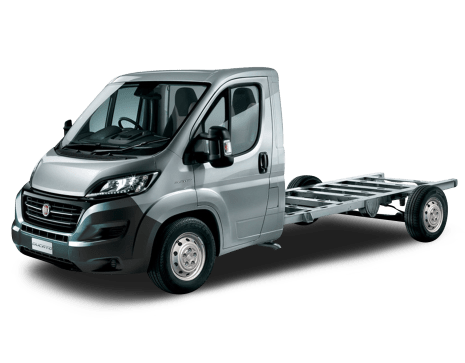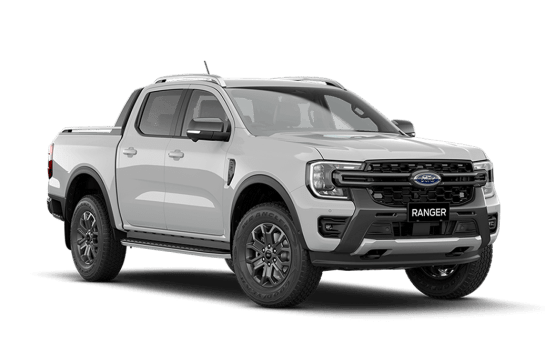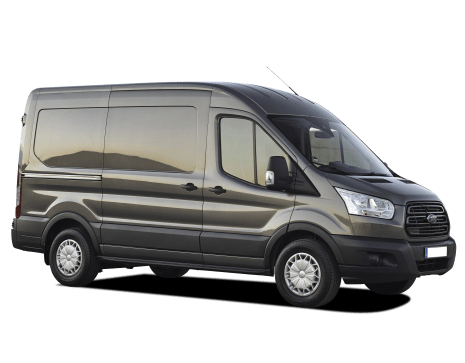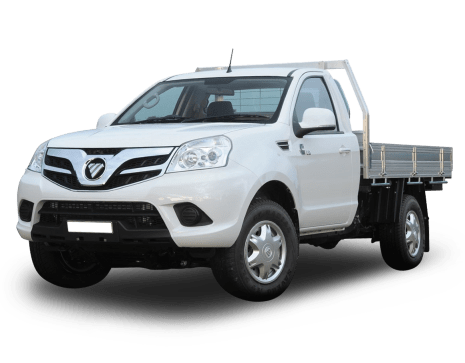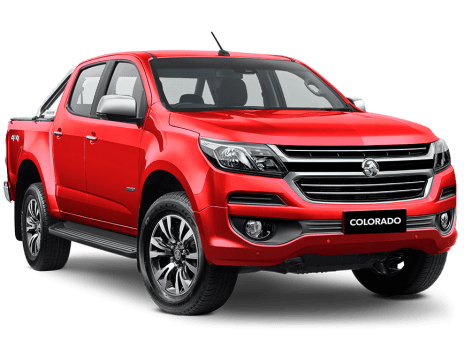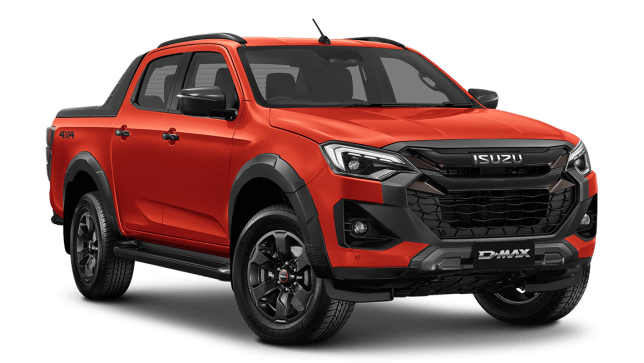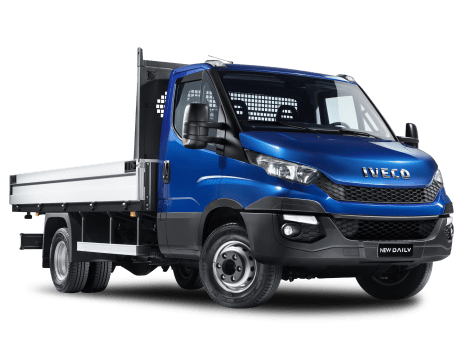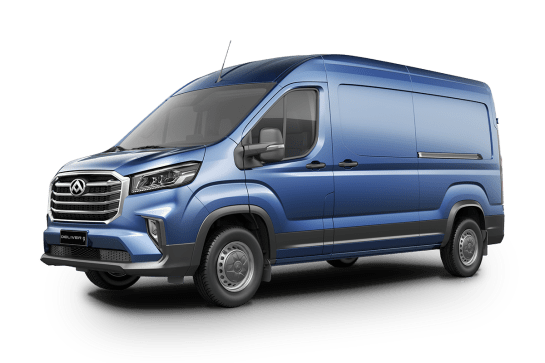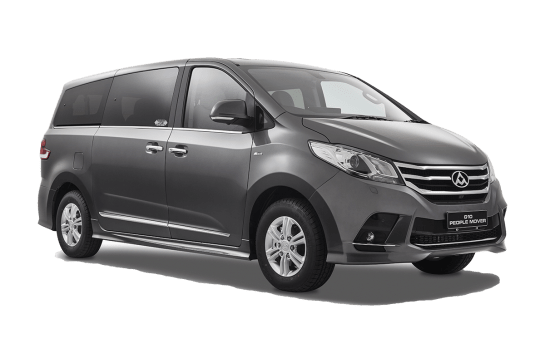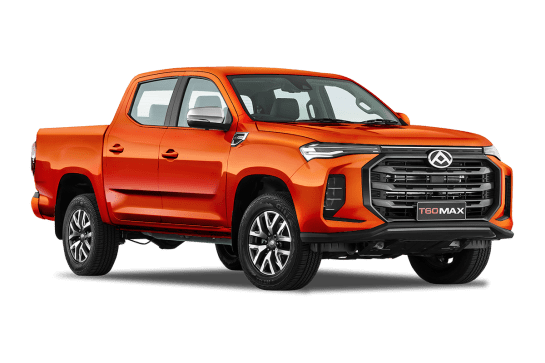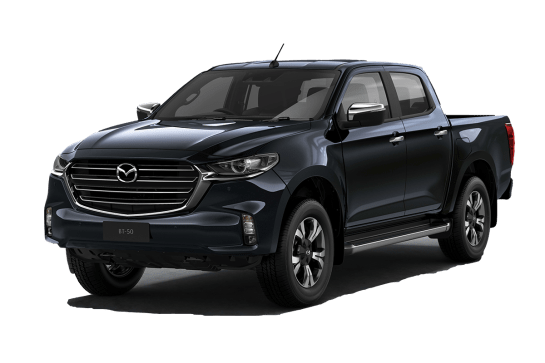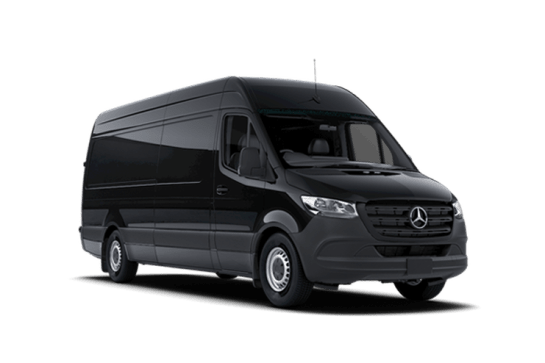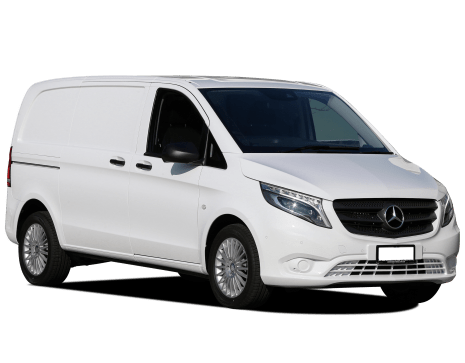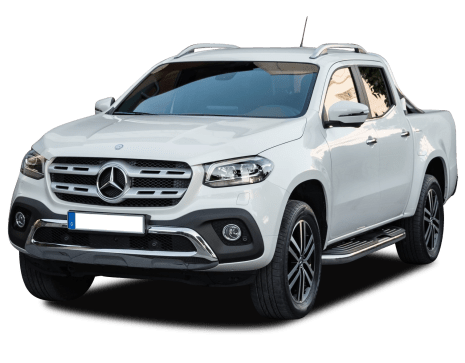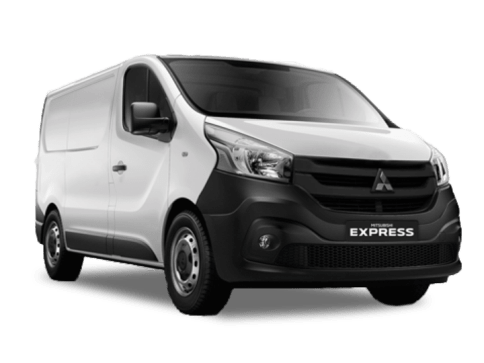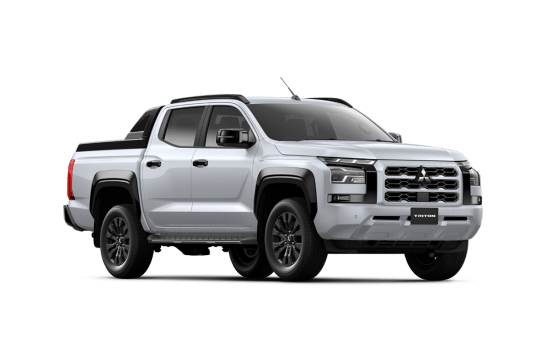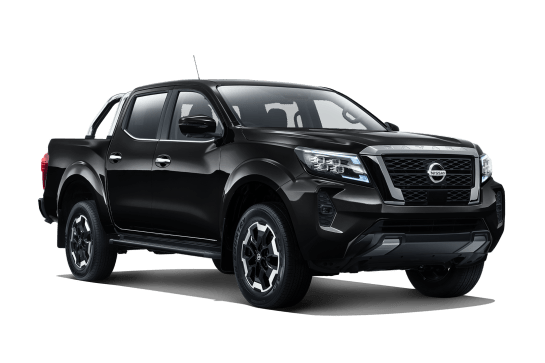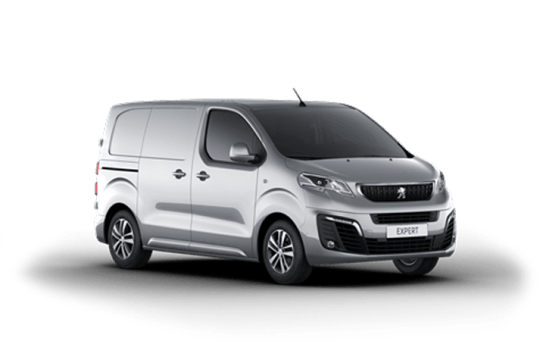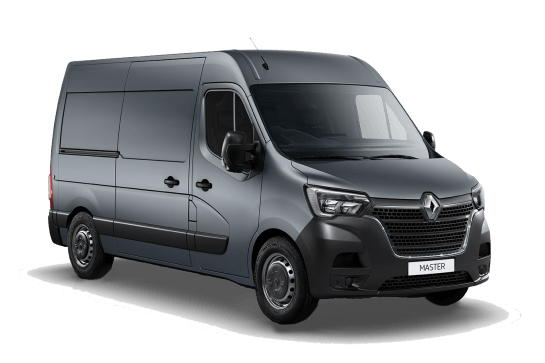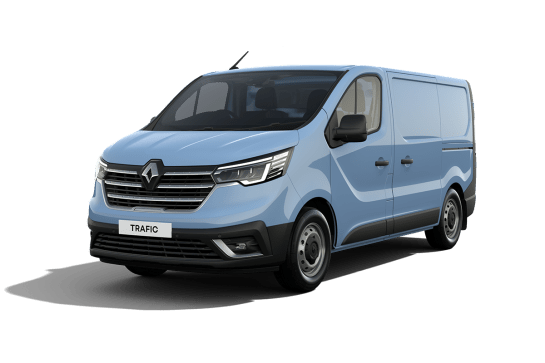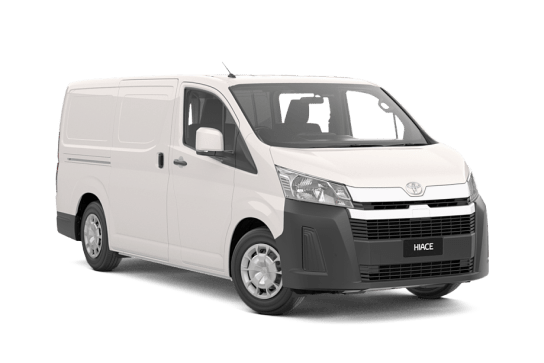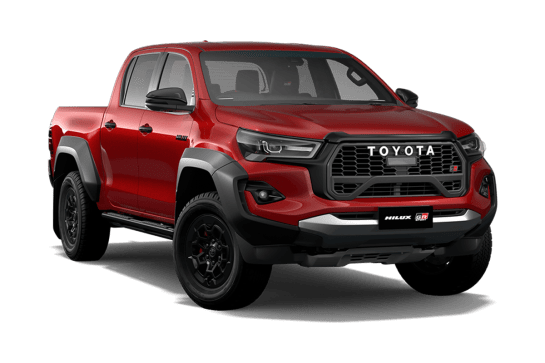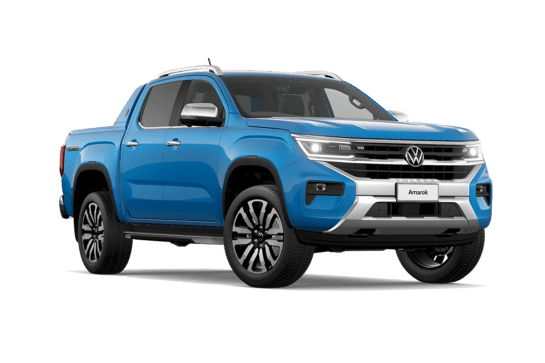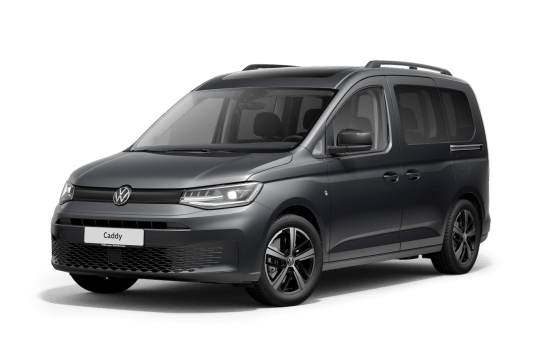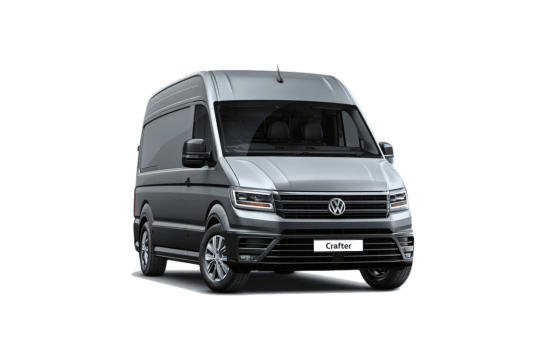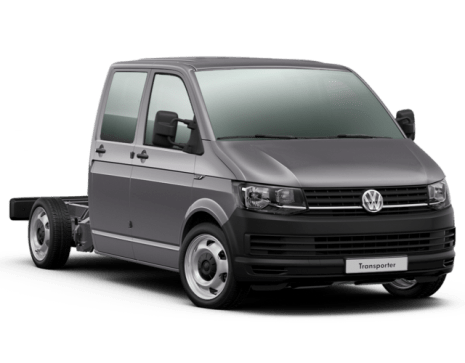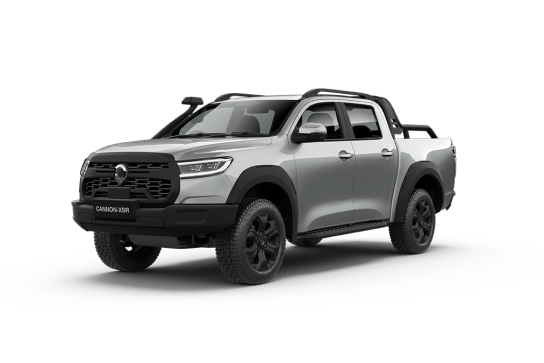
GWM UTE VS Mitsubishi Express
GWM UTE
Likes
- Well equipped
- Front and rear diff locks
- Well priced for something with so much gear
Dislikes
- Not as refined as it should be
- Jittery ride on irregular surfaces
- Overly busy transmission
Mitsubishi Express
Likes
- Good to drive
- Decently priced
- Dual side doors and barn doors make it work ready
Dislikes
- No advanced safety tech
- Manual models miss out on reversing camera
- Old-school media system
Summary
GWM UTE
The Cannon XSR is GWM’s new top-shelf ute variant.
This dual-cab 4WD ute is intended as an off-road-focussed vehicle and has visual and mechanical upgrades over the rest of the Cannon stable, including part-time 4WD (not the full-time 4WD on GWM’s lower-spec Cannons), a front differential lock (in addition to the existing rear diff lock), raised air intake (aka a snorkel) and Cooper Discoverer AT3 all-terrain tyres.
It’s priced from $52,990 drive-away, so costs about $7500 more than you’d pay for the standard Cannon X on which this special edition ute is based. But it still undercuts similarly-equipped top-spec Ford Ranger and Toyota HiLux utes by about $20,000.
Read more about
So, with twin lockers, a snorkel, underbody protection and all-terrain tyres, is the GWM XSR worth the extra cash?
Read on.
| Safety rating | |
|---|---|
| Engine Type | 2.0L turbo |
| Fuel Type | Diesel |
| Fuel Efficiency | 9.4L/100km |
| Seating | 5 seats |
Mitsubishi Express
It has been a while since we’ve seen a Mitsubishi Express van on sale in Australia, and the one that has just launched here is a very different offering to its predecessor.
That’s because you could cover the tri-diamond badges on the grille or back door of the new 2020 Mitsubishi Express and be fooled into thinking that you’re looking at a Renault Trafic. Because you are.
The Express is a direct bi-product of the Alliance between Renault and Mitsubishi, and just like the Trafic, it’s made in France, at Renault’s Sandouville plant.
This isn’t a comparison - the headline isn’t Mitsubishi Express vs Renault Trafic - but the question is: why would you choose one over the other?
You’d be correct in assessing this as an exercise in badge engineering - Mitsubishi calls it “branded product” - but it could well be that you’d choose an Express because Mitsubishi has a broader network of dealers (186 at the time of writing, versus Renault’s 56), not to mention the potential for major fleet discounts and an upstream ute alternative in the Triton that helps the brand “offer the complete LCV solution”. Renault, you could counter, has a smaller and larger van for its own “LCV solution”.
There’s more to consider, including ownership, safety and value for money - read on for all the details.
| Safety rating | — |
|---|---|
| Engine Type | 1.6L turbo |
| Fuel Type | Diesel |
| Fuel Efficiency | 6.2L/100km |
| Seating | 3 seats |
Verdict
GWM UTE7/10
In a very competitive ute market, the GWM Cannon XSR represents plenty of bang for your buck, but it’s just not as refined as you’d hope.
It should be better at this price-point, especially when it’ll be unfavourably cross-shopped with lower-spec variants in the Ford Ranger, Isuzu D-Max and Toyota HiLux line-ups.
It’s a nice enough vehicle on-road, and the XSR is an effective 4WD on the dirt without ever being truly exceptional – but that’s fine for those who want to save big bucks and still drive away in a well-equipped twin-locked off-road vehicle.
Mitsubishi Express7.5/10
The Mitsubishi Express is an impressive return to the market for the brand, albeit one that won’t suit every buyer’s needs or wants. If you need to personalise your van, or if you value the safety technology offered by rivals like the HiAce, then you may need to shop elsewhere.
But if you do choose the Express, you will be getting a value-packed and very comfortable van that is backed by a broad dealer network and decent ownership prospects.
Design
GWM UTE
The XSR is 5439mm long (with a 3230mm wheelbase), 1958mm wide, and 1918mm high. It has a listed kerb weight of 1965kg.
It looks like the mongrel child of a HiLux, Ranger and D-Max – in a good way.
The wider-than-standard wheel track, as well as the snorkel, sports bar, substantial bash plates, tyres and even red brake calipers add to this ute’s presence.
Mitsubishi Express8/10
The badges are different, and so is the front bumper and bonnet. But you might otherwise struggle to tell what’s changed between a Trafic and the Express.
One thing Mitsubishi is offering, though, is a standard three-seat cabin on all models, plus dual side sliding doors and rear barn doors across every variant in the line-up. That’s a win for hard workers.
Here’s a table of dimensions to help you size up which might be best for you:
| SWB | LWB | |
| Length | 4999mm | 5399mm |
| Wheelbase | 3098mm | 3498mm |
| Width | 1956mm | 1956mm |
| Height | 1971mm | 1971mm |
| Ground clearance (minimum, unladen) | 160mm | 160mm |
| Turning circle | 11.8m | 13.2m |
As you can see, the extra size on offer in the LWB model is strictly nose to tail, with no other compromises to consider apart from, understandably, the larger turning circle. But Mitsubishi claims even the smaller version can cope with two pallets in the back.
As for cargo zone dimensions, here’s how the two body styles compare:
| SWB | LWB | |
| Floor length (not including Load Through port) | 2537mm | 2937mm |
| Floor width | 1662mm | 1662mm |
| Wheel-arch width | 1268mm | 1268mm |
| Height | 1387mm | 1387mm |
| Tie down points | 12 | 14 |
| Cargo volume | 5.2m3 | 6.0m3 |
It’s worth noting that there is no high-roof option available, where you can get a taller body in most competitor vans.
And while it is a bonus that there are barn doors (still not available on the HiAce), you can’t option a liftback tailgate. Plus, while the dual side sliding doors is an advantage as many OEMs charge extra for a driver’s side slider, you can’t option glazing for the rear door from Mitsubishi.
The company says that it is simply offering what it can get as part of the Alliance with Renault, but if you need to tailor a van to suit your specific needs, you might end up going with the French van (or the VW Transporter, which is the most configurable on the market).
Check the engine specs section below for more specs on weights and capacities. Next, let’s take a look at the cabin, starting with some interior images.
Practicality
GWM UTE
The XSR’s five-seat interior is a neat and roomy space but, in line with most utes at this price-point, if you scrutinise it in a critical way you soon discover that some parts feel a bit cheap and flimsy, such as some buttons, dials and switches.
Up front there are two USB ports, a wireless charging pad, a 12V plug and a capacious centre console.
A pair of cupholders can be concealed under a sliding cover and the storage bin is on the right side of big.
The driver gets a six-way power-adjustable seat; the front-seat passenger gets four-way power adjustment. Both seats are comfortable without being too plush.
Second-row passengers get a firm but comfortable seat and amenities include a USB port, a 220V plug, and a fold-down centre armrest.
The second-row seat base can be folded up and out of the way to make room for more gear if only two people are travelling.
Build quality is generally okay, part from the aforementioned flimsy-feeling buttons.
The XSR’s business end, the tub, has a durable-looking tub liner, tie-down points and a handy pop-out step hidden in the top of the tailgate.
But it's worth noting this ute’s tailgate can’t be locked.
Mitsubishi Express8/10
With a three-seater cabin as standard, the Express is already at an advantage over a HiAce. You can’t get a three-seat HiAce, and if you’ve got apprentices or workmates that always need a lift - but you don’t want the space sacrifice that comes with a crew van - it could be a crucial decision-maker for you.
And there are decent amenities for the occupants, too, with three cup holders and ample storage options across the dashboard, as well as large bottle holders in the doors. In fact, all told, Mitsubishi claims there is 43 litres of loose item storage in the cabin.
The driver’s seat gets manual height adjustment, lumbar adjustment and an armrest, as well as steering wheel rake and reach adjustment, so getting a comfortable driving position should be a cinch. Unlike the Trafic, there’s no driver’s seat heating option, but the clever “Load Through” cavity - for loading items up to 4.14m long - under the passenger seat is fitted on all models (but unlike the Trafic, which has a bulkhead, there’s no porthole, and the vehicles we tested with cargo cages didn’t have an opening to make the best use of this).
It’s set up for hard work, with rubber floor mats and a “hard wearing” poly trim on the steering wheel, though that finish is a bit coarse, and not as pleasant to hold as a leather wheel. The seat trim is fabric, and feels to be made of a durable material.
Ergonomically, it is no different to a Renault Trafic. Most important controls fall easily to hand, though people unfamiliar with Renault switchgear may need to pay attention at the dealership when the positioning of the cruise control and speed limiter buttons are explained. The buttons are between the dashboard and steering wheel.
And if you’re looking for the volume button, it’s on the weird little stalk behind the wheel itself. That has tuning and phone controls too, and it takes some getting used to. Further, if you’re used to the blinkers being on the “right” side of the steering wheel in Japanese cars, the Express is the exception.
When it comes to media and infotainment, there’s a lot left to be desired. There is no touch screen at all, and you can’t option one, either. Some drivers will appreciate that, but others will lament the lack of smartphone mirroring tech (Apple CarPlay and Android Auto), and likewise there is no sat nav available, either. There’s not even a CD player, but as standard the Express gets a smartphone holster with USB port on top of the dash, so there are two USB ports to keep things charged, plus a 12-volt below if you need it.
But the simple media system does offer a USB port to connect your phone or MP3 player, and Bluetooth phone and audio streaming, as well as DAB digital and AM/FM radio. The sound system has just two speakers, but it’s okay.
The cargo zone is, as you’d expect, a big, largely empty space. There’s no steel bulkhead option to separate the two zones, which could be frustrating for some customers - though if you can deal with the noise reverberation but just want to make sure things don’t fly from front to rear, there is a mesh cargo barrier available.
There are 14 tie-down points in the SWB (eight floor mount, six wall mount) and 16 tie eyelets in the LWB (10 floor, six wall). Plus there’s a rear-mount 12-volt outlet near the back doors to keep things charged.
Price and features
GWM UTE
The XSR has a manufacturer suggested retail price of $52,990 drive-away.
Standard features include a 9.0-inch multimedia touchscreen system (with Apple CarPlay and Android Auto), a 7.0-inch digital driver info display, quilted leather seat trim, quilted leather door trim, 18-inch black alloy wheels, a sports bar, an assisted tailgate (with a pop-out step) and roof rails.
It also has LED headlights with LED DRLs, side steps, powered mirrors, keyless entry, push-button start, power-adjustable and heated front seats, a leather steering wheel, single-zone climate control air conditioning, an auto-dimming rear view mirror, tinted rear glass, and a six-speaker audio system.
As well, the XSR gets a part-time 4WD system (with 2WD high-range, 4WD high-range and 4WD low-range), rather than full-time 4WD, which is on lower-spec GWM utes; a front differential lock (in addition to the existing rear diff lock) and Cooper Discoverer AT3 all-terrain tyres.
It also gets red brake calipers, an underbody bash plate, wheel arch flares, and a sunroof.
Elsewhere, it gets steel front and rear bumpers and a new black grille.
Mitsubishi Express8/10
Its starting price is cheaper than a VW Transporter, Hyundai iLoad, Toyota HiAce, Ford Transit Custom and Mercedes-Benz Vito. That could be all you need to know, but here’s the detailed info on the spec of the 2020 Mitsubishi Express range.
There is just one trim level - GLX - but it is available with two body lengths, short-wheelbase (SWB) and long-wheelbase (LWB), and a choice of two powertrains.
The 1.6-litre manual SWB model opens the line-up at $38,490 (RRP), while the 2.0-litre automatic SWB is a hefty $4000 more, at $42,490 (RRP). You can read more about the engines in the relevant section below, but just note those prices are before on-road costs, and therefore not driveaway deals. But keep in mind, Mitsubishi Australia promises “very competitive” fleet pricing.
Need a long-wheelbase model? You’ll have to stretch the budget by $2000. As such, the 1.6L manual LWB is $40,490 (RRP), while the 2.0L auto LWB costs $44,490 (RRP).
As mentioned, GLX is the trim level. But the 2.0-litre auto models get a bit more kit to justify their cost.
As standard on all models: 16-inch steel wheels with a full-size spare wheel, halogen headlights and daytime running lights, grained plastic bumpers, dual side sliding doors, barn doors at the rear, rear parking sensors, three-seat capacity, a stereo with Bluetooth phone and audio streaming plus two USB ports, a digital speedometer, cruise control with speed limiter, and single zone air conditioning.
The 2.0L auto models add a reversing camera which is integrated into an auto-dimming rearview mirror, plus rain-sensing wipers, dusk sensing headlights and front and rear fog lamps.
Interested in knowing what safety spec is standard, and what’s missing? Read the safety section below.
There are four colours to choose from, and they don’t have fancy names, either. You’ve got the no-cost options of White Solid and Red Solid, or the added-cost ($740) Silver Metallic or Black Metallic. If you want a bigger range of colours, be sure to have a look at the Ford Transit Custom, which has more than 100 options to choose from.
There is a range of accessories available as dealer-fit options as well, including: roof racks, roof rails, a roof platform with rear ladder, a cargo net, mesh cargo barrier, rubber floor mat for the load space, wooden panelling for the rear (floor, wall and wheel-arch), bumper protection, barn door protectors, a rear bumper step in galvanized steel, and towbar kits with or without electronic brake controllers. Ask your dealer for pricing.
Under the bonnet
GWM UTE
The XSR has the Cannon’s 2.0-litre four-cylinder turbo-diesel engine that produces 120kW at 3600rpm and 400Nm from 1500rpm to 2500rpm.
It has an eight-speed automatic transmission.
As mentioned, the XSR has part-time 4WD – with 2WD high-range, 4WD high-range and 4WD low-range – rather than the full-time 4WD set-up that’s in standard Cannons.
Mitsubishi Express8/10
There are a couple of options available in the Express range.
Elect for a six-speed manual transmission and you get a 1.6-litre twin-turbo four-cylinder diesel engine producing 103kW of power (at 3500rpm) and 340Nm of torque (at 1500rpm).
Choose the six-speed dual-clutch automatic transmission and the engine is a 2.0-litre four-cylinder single-turbo diesel motor, with 125kW of power (at 3500rpm) and 380Nm of torque (at 1500rpm). This engine meets a stricter emissions requirement than the other (Euro 6 vs Euro 5) because it has a 25-litre AdBlue urea treatment tank, though both have a diesel particulate filter (DPF), too. Depending on what side of the fence you sit, that’s either an advantage or an added cost and burden.
The Express is only available in front-wheel drive (FWD/2WD), so there’s no rear-wheel drive (RWD) or all-wheel drive (AWD/FWD) options available.
Of course, you’ll need to consider weight if you’re buying a van like this. And it comes down to more than just engine specs - you need to consider payload, towing specifications, gross vehicle mass (GVM) and gross combination mass (GCM).
Here’s a table with the figures you need to know:
| SWB manual | SWB auto | LWB manual | LWB auto | |
| Kerb weight - unladen | 1810kg | 1870kg | 1860kg | 1920kg |
| Gross vehicle mass (GVM) | 2960kg | 2985kg | 3060kg | 3070kg |
| Payload | 1150kg | 1115kg | 1200kg | 1150kg |
| Towing capacity (unbraked) | 750kg | 750kg | 750kg | 750kg |
| Towing capacity (braked) | 2000kg | 1715kg | 2000kg | 1630kg |
| Gross combination mass (GCM) | 4960kg | 4700kg | 5060kg | 4700kg |
| Roof load limit | 200kg | 200kg | 200kg | 200kg |
Wanting a petrol, hybrid, electric, plug-in hybrid or gas version of the Express? No can do… well, not in Australia, and not yet.
You will have to stay tuned for our full-scale Tradie Review on the Mitsubishi Express, where we will load it up to its GVM limit. But for day-to-day driving impressions, see the driving section below.
Efficiency
GWM UTE
The Cannon XSR has a listed fuel consumption of 9.4L/100km on a combined cycle.
Actual fuel consumption on this test, from pump to pump, was 11.2L/100km but, as is the nature of my testing, I did a lot of low-range four-wheel driving.
The Cannon XSR has an 78-litre tank so, going by that fuel figure above, you could reasonably expect a driving range of about 696km from a full tank.
Note: Drop 30km to 50km from any vehicle’s total calculated fuel-range figure for a better idea of that vehicle’s safe touring range – so, following that advice, the above driving range figure (696km) would become 666km after a 30km safe-distance buffer has been subtracted.
Also, remember that numerous other factors affect your fuel consumption and so impact your driving range, including how much extra weight you have onboard (passengers, camping gear, etc), whether your vehicle is fitted with any aftermarket equipment (bullbar, spare-wheel carrier, etc), whether you are towing (a camper-trailer, caravan, or boat, etc), your vehicle's tyre pressures, and the conditions.
Mitsubishi Express8/10
Fuel consumption for the Mitsubishi Express depends on the engine/transmission combination you choose.
The 1.6-litre twin-turbo manual version is the more frugal according to official combined cycle consumption figures, at 6.2 litres per 100 kilometres. Opt for the 2.0-litre single-turbo auto and the fuel consumption is claimed at 7.3 litres per 100 kilometres.
Those figures are based on a driving loop that doesn’t incorporate loaded testing, so you can expect your real world consumption to be higher - but even so, the claims are lower than the likes of the HiAce (7.5L diesel manual, 8.2L diesel auto).
On test, for instance, I saw a return of 7.9L/100km in the SWB auto, which experienced a few traffic snarls in Sydney. The LWB auto with 200kg of ballast over the rear axle - in which I did 100km of mixed urban, interurban and freeway driving with free flowing traffic for the most part - had a displayed return of 7.8L100km.
The fuel tank capacity is large, at 80 litres. That means theoretically excellent range on a single tank - up to 1290km if you can manage the claimed consumption in the manual model.
Driving
GWM UTE
If you’re not expecting a dynamic, sporty driving experience from the Cannon XSR, then you won’t be disappointed.
I’m enjoying the fact that off-road vehicles from China and India are improving all the time but there are significant trade-offs when opting for a much cheaper version of the ute you actually want.
The XSR is not an insubstantial ute, but that doesn’t excuse its less-than-ideal steering (which feels too loose) or its stiff ride on upgraded suspension which, even though it increases wheel travel (for 4WDing – more about that later), seemingly hasn’t been tuned to suit the XSR’s bigger tyres, wider wheel track and greater bulk than its lower-spec stablemates.
Also, this ute has an unwieldy turning circle of 13.7m, which makes it an interesting vehicle to manoeuvre along busy urban streets or through a bustling car park.
This is a well priced ute if compared to similarly equipped, much more expensive utes, but that doesn’t excuse its touchy throttle and thrashy transmission.
However, its engine, which can feel underdone when challenged, has a relaxed feel about it when open-road cruising and if you aren’t putting too much pressure on it you likely won’t think it’s much of a let-down.
Overall, the XSR does okay on sealed surfaces, without ever getting anywhere near great – it’s simply not as refined or compliant as it could – or should – be.
On the dirt track leading to our 4WD test track, the XSR was very skippy over corrugations and tended to thump through potholes.
This ute does go well off-road though when it comes time for low-range 4WDing but, equipped with front and rear diff locks, that’s to be expected.
Off-road traction control and other systems including hill descent control, are adequate without being as seamlessly smooth as the equivalent systems in more expensive vehicles.
It also has 'Crawl Mode' (allows for no-pedal, low-speed driving) and 'Turn Assist' (which brakes the XSR’s inside rear wheel to reduce the ute’s turning circle on traction-compromised surfaces).
The over-sensitive throttle is far from ideal during low-speed low-range 4WDing when you need absolute control for safe driving, but I did become used to it – or at least I put up with it.
As mentioned earlier, the upgraded suspension has boosted wheel travel, which means you’re more than likely able in the XSR to stretch a tyre to the dirt for better traction and controlled forward progress.
The XSR’s Cooper Discoverer AT3 all-terrain tyres help, especially when the dirt becomes sticky mud that would gum up a lesser tyre, and we had no strife getting up and over one of our more severe set-piece hill climbs on that rubber.
All in all, the XSR is a capable twin-locked 4WD without ever being exceptional – and that’s fine.
The Cannon XSR has towing capacities of 750kg (unbraked) and 3000kg (braked).
Mitsubishi Express8/10
If you’ve never driven a modern-day mid-size (2.5-3.5 tonne) van, you will be amazed at their road manners. There’s not a bad one in the class, in round terms, and the Express builds upon the Renault Trafic’s reputation as being among the best in the class for comfort and drivability.
It really is a pretty sweet appliance, with a ride quality that is mostly excellent whether you’re in the SWB or LWB model. It offers decent comfort and control at low speeds and high speeds, and is really only upset when the potholes are deep or have sharp edges.
The SWB model has a slightly more pitchy ride when unladen, but we didn’t get a chance to put any weight in it just yet. The LWB model had 200kg of ballast over the rear axle, and that weight - combined with the extra 400mm of wheelbase - made for a very comfortable drive. Not too mushy or slushy, but actually nicely cushy.
Aside from the low-speed electric whirring sound from the power steering, the steering is terrific - it is nicely weighted and pivots well, even the LWB model. Sure, it definitely feels its size, but it’s easily manageable and surprisingly agile for such a big rig, and easy enough to park as well, thanks to the split side mirrors and reversing camera (which pops up in the rear-view mirror and is quite small, but there are rear parking sensors to help out, too).
Because I sampled both automatic models, that meant I only had the chance to sample the 2.0-litre four-cylinder single-turbo diesel engine - and it’s a very strong performer.
I never once felt like I needed any more pulling power with this - admittedly small - amount of weight on board.
And the dual-clutch transmission is decent as well. You get away from a standing start pretty well, with just a little bit of turbo and transmission lag to contend with. It’s never annoying, even in traffic jam drudgery - unless the engine start stop system activates, and then it can be a little bit sluggish to get moving again.
However, as is the case with plenty of dual-clutch transmissions in commercial vehicles, it’s not quite as measured or linear in its progress when there’s no load on-board, tending to lurch away a little more when unladen.
And while we were hardly pushing the GVM limits with only 200kg in the back, the brake pedal of the LWB did feel at times like the push was a little longer than it should have been.
It is a decently refined van, especially considering there’s no steel bulkhead to shield you from the noise intrusion at the rear. One thing, though - our test vans both had optional rubber mats fitted, and they were quite odorous.
As mentioned the visibility is pretty decent, but I couldn’t help but feel jealous of a HiAce I overtook that had its blind-spot monitoring system flicker on the mirror. It would just add a little bit of extra piece of mind, as there’s no vision over your shoulder, and if you do have a load in the back it’s hard to see in the rearview mirror. And unlike other vans in the market, you can’t option rear windows, either.
Safety
GWM UTE
The Cannon range has the maximum five-star ANCAP rating from testing in 2021, however the Cannon XSR is not covered by this rating.
Standard safety gear on the XSR includes seven airbags, AEB (sans pedestrian detection) forward collision warning, lane-departure warning, lane-keep assistance, adaptive cruise control, traffic sign recognition, rear parking sensors, a 360-degree camera and tyre-pressure monitoring.
It does not get front parking sensors, lane-change assist or a door-open warning.
Mitsubishi Express5/10
At the time of writing there is no ANCAP crash test rating for the Mitsubishi Express. In fact, no safety authority on the planet has done a crash test score on the new-generation model - but the Renault Trafic on which it is based copped a nasty three-star score in Euro NCAP testing back in 2015. Ouch.
The Express doesn’t have an overly generous safety offering. No model is equipped or available with autonomous emergency braking (AEB), nor lane departure warning, lane keeping assistance, blind spot monitoring, front or rear cross traffic alert, or rear AEB. It’s sparse. There is a blind-spot mirror on the passenger side sun visor, but it’s not nearly as effective as a sensor.
You do get a reversing camera fitted as standard in the auto models, but not the manual variants (and it’s a rearview mirror for the autos) - even the extremely affordable LDV G10 has a reversing camera range-wide. Auto models also score rain sensing auto wipers, auto headlights and an auto-dimming rearview mirror, while manuals miss out on all of that good stuff.
Reversing sensors are standard range-wide, as is stability control with rollover mitigation, ABS, Electronic Brakeforce Distribution with load sensing, hill start assist and Emergency Stop Signal (flashing tail-lights under hard braking). There’s also an Extended Grip driving mode, which allows the van to better manage available traction on slippery surfaces.
The airbag count is odd, too, at five: you get dual front airbags, curtain airbags for both sides, but only a side airbag on the driver’s side.
For a brand-new van, the safety spec is frankly disappointing, and goes against Mitsubishi’s strides in its other models in its range, where it often has class-leading or equivalent safety tech.
Want a better equipped van when it comes to safety technology? Check out the Toyota HiAce, Mercedes-Benz Vito and Ford Transit Custom, all of which leave the Express (and Trafic) in the dust.
Ownership
GWM UTE
The XSR is covered by a seven year/unlimited km warranty.
The first service is scheduled at the six-month/5000km mark (and costs $260), then every 12 months or 10,000km, with each service costing $360 a pop.
Mitsubishi Express7/10
Mitsubishi is constantly dabbling in the long warranty promotional deals, but the standard warranty on offer for the Express is five years/100,000km.
The brand also has a capped price servicing plan for the first three years/45,000km of ownership. With intervals set at 12 months/15,000km, the costs are low, at $250 per visit.
And if you service your van with Mitsubishi’s dealer network, you will also get roadside assistance for up to four years.
If you’re wondering how that compares with the Renault plan? It’s a three-year/unlimited km warranty (but promotional five year/200,000km warranty plans are available until 31 August 2020). The Trafic has capped price servicing every 12 months or 30,000km intervals, or as determined by the oil sensor, at $599 per visit - but as of July 1 2020, it spans five years/150,000km, and is available with up to five years’ roadside assistance when maintained in-network.
You might be curious about Mitsubishi Express problems - but it could be worth taking a look at the Renault Trafic problems page to find out if there have been issues around reliability, engine or transmission problems, recalls and common complaints.



